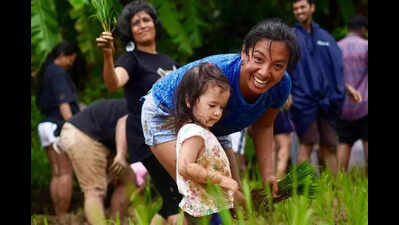ARTICLE AD BOX

Panaji: Around 200 rice seedlings were planted into a 100sqm patch by 20 enthusiastic children, their parents, and a dozen architecture students. With feet sunken in the slush, the group immersed themselves in this centuries-old practice, creating a sensory experience.“The manual planting gives the children a chance to feel the soil and bond with the Earth,” the architect and eco-educator behind this experiential learning activity, who has been leading this monsoon ritual for six years by sowing seeds and evoking a sense of wonder among the children.Before entering the fields, the group interacted with the Goa biodiversity committee, which showcased traditional rice varieties, seed preservation techniques, and the role of biodiversity in farming.
The participants spent three hours in the field, planting the seedlings. “Curtorim is called the agrarian belt of South Goa. It was, therefore, important to help the farmers here with their kharif ritual through this activity,” D’Silva said.“There are a lot of children and parents who want to make that shift towards alternative learning,” D’Silva said. “This kind of engagement plants deeper values — respect for food, understanding labour, and ecological sensitivity.”But the journey does not end with planting. The group plans to return in a few weeks to see their seedlings grow, while local farmers will care for the patch to ensure a fruitful harvest.



.png)
.png)
.png)
















 4 hours ago
3
4 hours ago
3









 English (US) ·
English (US) ·